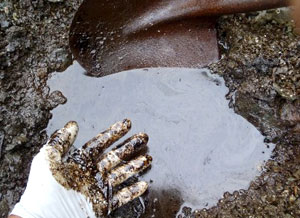Believe it or not, ExxonMobil has yet to pay up for the Valdez oil spill off the coast of Alaska that occurred 25 years ago.
After spewing more than 11 million gallons of crude oil into 700 miles of a pristine ecosystem, the company has managed to endlessly postpone $92 million in payments for restoration.
According to documents released by Public Employees for Environmental Responsibility (PEER), the US Justice Department and State of Alaska are still waiting for scientific studies to be completed so they can collect the money and begin a recovery plan for wildlife and their habitat.
All these years later, the ecosystem has yet to recover. Oil can still be found under the beach, and the formerly abundant herring population has never rebounded from its crash. Many other species, such as birds, otters and orcas, have not yet recovered.

"Amazingly, it’s been seven years since the governments demanded this payment from Exxon but they have yet to collect a dime," says Rick Steiner, a PEER board member and retired University of Alaska professor who attempted to intervene in the case in 2010 to break the logjam.
"This travesty may be a foreshadowing of the official neglect we can expect after spills that will surely occur from drilling in the Arctic Outer Continental Shelf," he adds.
"This litigation is the environmental equivalent of Dickens’ Bleak House but it is the public’s estate that is withering away," states PEER Executive Director Jeff Ruch, noting that the 2010 Gulf BP blowout, which has yet to reach settlement of what will be multi-billion dollar civil damage payments, is more than 20 times the size of the Exxon Valdez spill."
And Exxon Mobil is still fighting litigation. It spent $3.86 billion over three years for clean up, and in 2009 it agreed to pay $470 million in interest on a $507.5 million judgment won by local victims, including fishermen and small businesses, in addition to the $900 million civil settlement, agreed to in 1991.
In 2008, the Supreme Court ruled that Exxon didn’t have to pay $2.5 billion to fishermen and others whose livelihoods were permanently damaged by the spill. Many of the victims have died since filing their claims – it’s easy for Exxon to just wait.
The additional $92 million, which also hasn’t been paid, was for unforeseen consequences that take time to emerge. Only 10% of the oil was ever recovered, the same as in the BP spill.
The Exxon Valdez has been recycled for its metal scrap.

PREVENT EXXON FROM GOING OUT OF BUSINESS